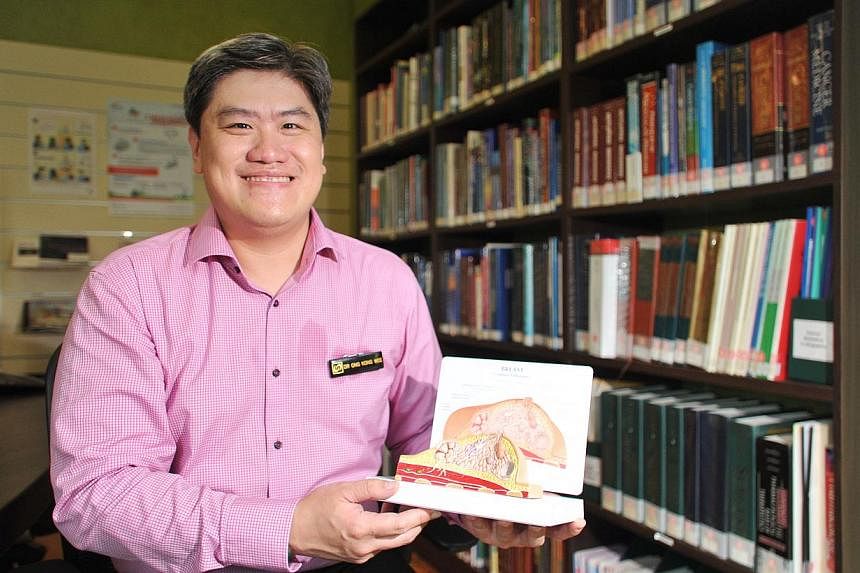A surgeon here has come up with a "map" that can reduce the risks and duration of a common early-stage breast cancer surgery.
In such surgery, or a sentinel lymph node biopsy, doctors remove the body structures that cancer cells are most likely to spread to.
Dr Ong Kong Wee, head of SingHealth Duke-NUS Breast Centre, has identified the positions of these structures, known as sentinel lymph nodes, within the patient's armpit. This saves time and cuts the risk of accidentally cutting nerves and blood vessels.
For if doctors do not know where the nodes are, said Dr Ong, they might make more incisions.
"This means an increased risk of cutting through essential structures like nerves," said the senior consultant at the National Cancer Centre Singapore.
Though current methods are safe, even the world's best surgeons cut through nerves 7 per cent of the time, causing numbness in patients' arms, he added.
Locating these lymph nodes might persuade more surgeons to try a cheaper method of surgery, which previously involved a steep learning curve, he said.
Currently, two main methods are used to locate the sentinel lymph nodes.
One uses radioactive tools with blue dye to locate these and is 95 per cent accurate. While these tools are a better guide, their use costs about $600 to $800 for patients and requires special facilities.
A second method, costing about $20, involves injecting the blue dye into the breast and allowing it to travel to the lymph nodes. Doctors then dissect the armpit to find the lymph nodes dyed blue and remove them. Dr Ong's "map"- a diagram of the internal structure of the armpit that identifies the sentinel lymph nodes - could boost the use of the second method as surgeons will know where to find the nodes and can remove them in a few minutes.
"Hopefully more will adopt this cheaper method to benefit their patients," he said.
Only half of breast cancer surgeons here use the cheaper pure blue dye method, he estimated. Dr Ong's work would help younger surgeons learn the blue dye method faster, said senior consultant Chan Ching Wan at National University Hospital's division of general surgery (breast surgery).
But experienced ones may already be able to find sentinel lymph nodes through practice, she said.
As part of surgery for early-stage breast cancers, the sentinel lymph nodes are removed and tested for cancer. If positive, doctors remove all the lymph nodes to ensure no residual cancer. But this leaves one in three patients with permanent arm swelling. Dr Ong is studying the possibility of removing fewer lymph nodes, thus preventing this.

